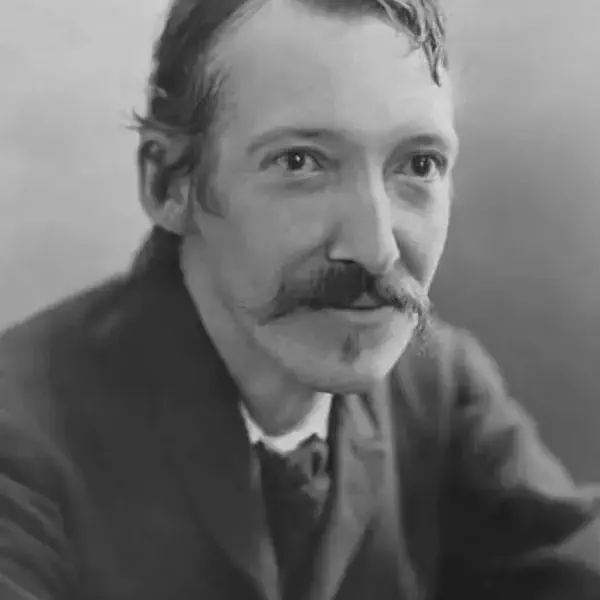
Robert Louis Stevenson, Scottish Author Died
December 03, 1894
Robert Louis Stevenson, the Scottish author, passed away on December 3, 1894, in Vailima, Samoa. He was born on November 13, 1850, in Edinburgh, Scotland. Stevenson was a highly regarded novelist, poet, and travel writer, best known for his classic works of fiction.
Born and educated in Edinburgh, Stevenson suffered from serious bronchial trouble for much of his life, but continued to write prolifically and travel widely in defiance of his poor health. As a young man, he mixed in London literary circles, receiving encouragement from Andrew Lang, Edmund Gosse, Leslie Stephen and W. E. Henley, the last of whom may have provided the model for Long John Silver in Treasure Island.
Settled in Samoa 1899
In 1890, he settled in Samoa where, alarmed at increasing European and American influence in the South Sea islands, his writing turned away from romance and adventure fiction toward a darker realism. He died of a stroke in his island home in 1894 at age 44.
Death in Vailima, Upolu, Samoa at age 44
On 3 December 1894, Stevenson was talking to his wife and straining to open a bottle of wine when he suddenly exclaimed, “What’s that?”, then asked his wife, “Does my face look strange?”, and collapsed. (Some sources have stated that he was, instead, attempting to make mayonnaise when he collapsed.)
He died within a few hours, at the age of 44, due to a stroke.
The Samoans insisted on surrounding his body with a watch-guard during the night and on bearing him on their shoulders to nearby Mount Vaea, where they buried him on a spot overlooking the sea on land donated by British Acting Vice Consul Thomas Trood.
Tomb Insscription
Based on Stevenson’s poem Requiem, the following epitaph is inscribed on his tomb:
Under the wide and starry sky
Dig the grave and let me lie
Glad did I live and gladly die
And I laid me down with a will
This be the verse you grave for me
Here he lies where he longed to be
Home is the sailor home from the sea
And the hunter home from the hill
Stevenson was loved by the Samoans, and his tombstone epigraph was translated to a Samoan song of grief. The requiem appears on the eastern side of the grave. On the western side the biblical passage of Ruth 1:16-17 is inscribed:
Whither thou goest, I will go; and where thou lodgest, I will lodge:
And thy people shall be my people, and thy God shall be my God:
Where thou diest will I die, and there will I be buried.[
Literary Contributions
Stevenson’s most famous works include “Treasure Island,” “Strange Case of Dr Jekyll and Mr Hyde,” “Kidnapped,” and “The Master of Ballantrae.”
Travel and Adventure
Stevenson had a keen interest in travel and adventure, and this is reflected in many of his works. His travels often influenced the settings and themes of his stories.
Illness and Travels to Samoa
Due to health concerns, Stevenson spent time seeking a climate that would be more conducive to his well-being. This led him to the South Seas, and he eventually settled in Samoa.
Vailima Estate
Stevenson and his family lived on the Vailima estate in Samoa, where he continued his writing and became involved in local affairs.
Death
Robert Louis Stevenson passed away at the age of 44 on December 3, 1894, at Vailima. His death was attributed to a cerebral hemorrhage.
Legacy
Stevenson’s literary works have had a lasting impact and continue to be widely read. “Treasure Island” and “Strange Case of Dr Jekyll and Mr Hyde” are particularly renowned and have been adapted into numerous films and plays.
Memorials
Stevenson is remembered with various memorials and commemorations, including the construction of the Robert Louis Stevenson Museum at Vailima and statues in his honor in different locations.
Robert Louis Stevenson’s contributions to literature have left an enduring legacy, and his works are celebrated for their storytelling, imagination, and exploration of themes such as adventure, morality, and the duality of human nature.